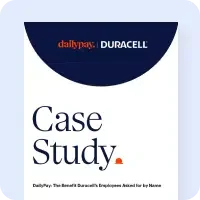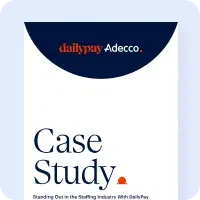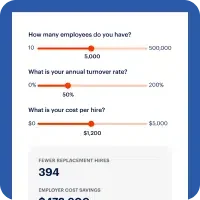Since the COVID-19 health crisis began, employers have needed to speed up use of contactless on-demand pay programs (sometimes called earned wage access), according to employee payment leaders speaking during a recent podcast of The Source, by DailyPay.
The pandemic and the resulting economic shutdown is “one of those events where those in HR, Payroll and Finance have had to think through sets of challenges that they never thought through before in their professional careers,” said DailyPay CEO, Jason Lee. Employers can no longer be “looking for a five-year plan for transformation, we are looking at now,” he said.
This has meant the adoption of new pay practices at an accelerated rate.
Even before the coronavirus struck, companies already had started to address the changing pay needs of a tech-savvy generation of younger workers that “actually values pay choice and pay flexibility sometimes more than salary,” said ADP, LLC, Vice President, Future of Pay Jeff Gies.
“This has driven the need for providing pay choices to workers,” Gies said.
The challenge for employers is closing the gap between the technological tools available on a personal level to deliver experiences instantly, such as ordering dog-walking services via a mobile phone application, and the applications used to pay workers, which have lagged behind, Lee said.
While these other applications are useful and significant, one would argue that “the experience one has with pay is much more important,” Lee said.
Gies echoed the disconnect by noting that one retail chain recently reacted to the customer desire during this health crisis for a contactless pay option, which was implemented, while their workers were still getting paper pay statements, which could potentially carry virus and disease.
Additionally, employers need to recognize there remains a large segment of workers that, prior to the pandemic, had not adopted digital payment methods. These workers are having to, overnight, modify their behavior, and this is uncomfortable for them. Gies asked: “How can employers help people make that transition?”
Both DailyPay and ADP have safe, secure programs that “empower, enable and put the employee at the center,” Lee said. As employers make the transition to digital and on-demand pay quickly, they can be assured that both providers are compliant and are the “gold standard for how we protect that data and keep it secure, and we have redundant systems,” Gies said.
DailyPay, through its Digital Wallet Solution seeks to “leverage technology to be sure that folks are compliant,” while staying behind the scenes, Lee said.
A key issue frequently overlooked before the pandemic struck, but now is a need-to-have for employers, is providing a “core foundation of financial wellness,” Gies said.
As employers scramble to rehire workers and those workers look to climb out of a period of financial hardship, it’s important for employers to provide “simple, real-life, easy ways to put more money back in the pocket” of workers that are living paycheck-to-paycheck, Lee said and “ADP has developed the right kind of programs to fill this need for their clients.”
DailyPay users have access to savings tools in the app, so when they look to access pay, workers can think “I’m getting my pay, and as I’m getting my pay, I’m thinking about my savings,” Lee said. “It has to be easy and native . . . and in a way it has to be connected to your pay.”
Go to thesource-dailypay.com to hear or watch the entire podcast, and to access previous podcasts that discuss on-demand pay, also known in the industry as early wage access.
For additional resources on this topic, see:













